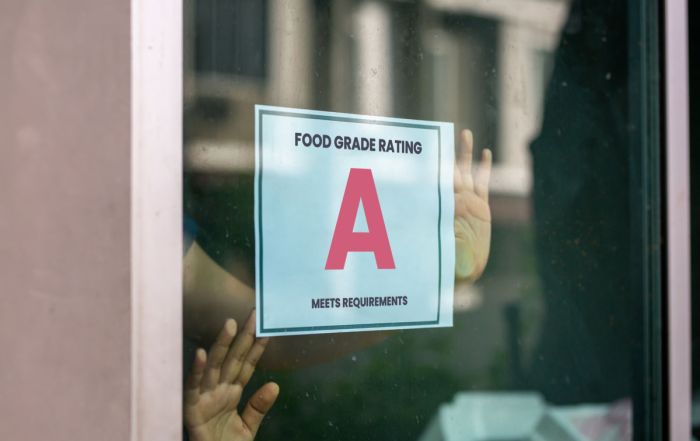What Foodservice Professionals Need to Know about the FDA Milk Testing Changes
In late-April and early-May 2025, headlines across the country and several social media posts stirred concern after reports surfaced that the U.S. Food and Drug Administration (FDA) had temporarily suspended part of its milk testing program. For foodservice operators, this raises an important question: does this change compromise the safety of milk—and by extension, dairy products served in commercial kitchens, cafeterias, and restaurants?
To clarify, the FDA did not stop testing milk for safety. The agency temporarily paused its milk proficiency testing program, which is designed to evaluate and certify the laboratories that conduct routine safety testing on milk. While the pause raised public alarm, the FDA emphasized it continues to test milk for contaminants like antibiotics, pathogens, and chemical residues. Milk sold across the country still undergoes rigorous testing through state-level and industry systems. As such, milk continues to be inspected and tested by regulatory authorities, just as it has been for the last century.
…from a safety standpoint, milk remains one of the most closely monitored food products in the United States.
From a safety standpoint, milk remains one of the most closely monitored food products in the United States. While I was in grad school, I had a professor who noted that the milk we pour in a foodservice or in our homes has been tested upwards of 15 different times before we consume it. As such, I think it is safe to say that foodservice operators can still rely on their dairy suppliers and regulatory bodies to maintain strict safety standards. However, public perception is just as important as the truth.
Consumer trust is a major pillar of food safety, and news headlines, even when misinterpreted, can erode that trust. For operators in schools, hospitals, and other institutions serving vulnerable populations, even a temporary perception of risk can lead to questions, concern, or changes in purchasing behavior.
Foodservice managers may find themselves fielding questions from staff or customers who have heard about the testing pause. It’s important to be proactive by educating your team members and, if appropriate, providing signage or statements that clarify the milk supply remains safe.
Now is also a good time to check in with your dairy vendors. Ask for updated safety protocols or third-party certifications. Transparency from suppliers helps reinforce your own credibility with customers and regulatory bodies.
While the FDA’s testing changes are not a direct threat, they’re a reminder that internal milk and dairy handling protocols should follow the food code and your established SOPs. Ensure cold chain practices, date labeling, and storage procedures are up to standard.
This one instance helps to illustrate just how easily regulatory changes, even temporary ones, can impact perception. Foodservice operations should include regulatory communication risks in their crisis planning. A prepared response helps maintain calm, trust, and consistency.
Although the FDA’s milk proficiency testing pause isn’t cause for alarm, it serves as a valuable case study in food safety communication and preparedness. For foodservice operations: stay informed, stay transparent, and be ready to reinforce confidence, not just in your dairy products and food, but in your entire safety culture. Risk Nothing.
READ MORE POSTS
Embracing Technology for Enhanced Food Safety in Foodservice Operations
Technology. We love it, we hate it. I’ve always been fascinated by technology; I remember getting my first Blackberry in the mid-90s and thinking it was the pinnacle of technological advances. Before that, I remember ordering a dictation program in college that was going to revolutionize the way I “typed” my assignments. Looking back, it really wasn’t worth the box that the program came in. Now, we have ChatGPT that will write the entire paper for us!
Meat Color and Doneness: Persistent Pinking
Late in June, my family and I were able to visit the Black Hills, an area of the country in which I have not had the opportunity to spend much time. One evening, as we dined at a local restaurant, I observed a table across the dining room sending back a dinner. While I couldn’t hear the entire conversation and I certainly wasn’t trying to eavesdrop, it was apparent that the customer was unhappy with the cooking of their hamburger and was sending it back because it was too pink in the middle. That immediately brought to my mind the phenomenon known as persistent pinking. A term I became familiar with because of work done by some colleagues here at Kansas State, which they present each summer to a group of foodservice operators who join us on-campus for an in-depth week-long look at all things food safety.
Quat Binding – Why this Can Have a Disastrous Impact on Your Sanitation Program.
In June, I had the opportunity to represent FoodHandler and speak on food safety behavior for customers of Martin Bros. Distributing in Waterloo, Iowa. One of the questions that was asked caught me a little off guard. The question was about quat binding. It caught me off guard not because it was a bad question, but only because it was not something I had previously been asked nor had not yet been exposed to the phenomenon. However, I soon learned that in certain jurisdictions, it is resulting in changes to how sanitizing cloths are to be stored in sanitizing buckets (or not) in the foodservice industry. When I returned home from the trip, I had to dig into it to learn about what quat binding is and how it might impact foodservice operations.
Are Grades for Foodservice Inspections a Good Idea?
I generally try to stay away from controversial topics in my blog, but this is one I thought it might be interesting to discuss. Occasionally on my travels, I will come across a state or a local jurisdiction that requires foodservice inspection scores be posted in the window of the establishment. The idea is to allow would-be customers the ability to see how the foodservice operation in which they are about to eat scored on their latest health inspection.










